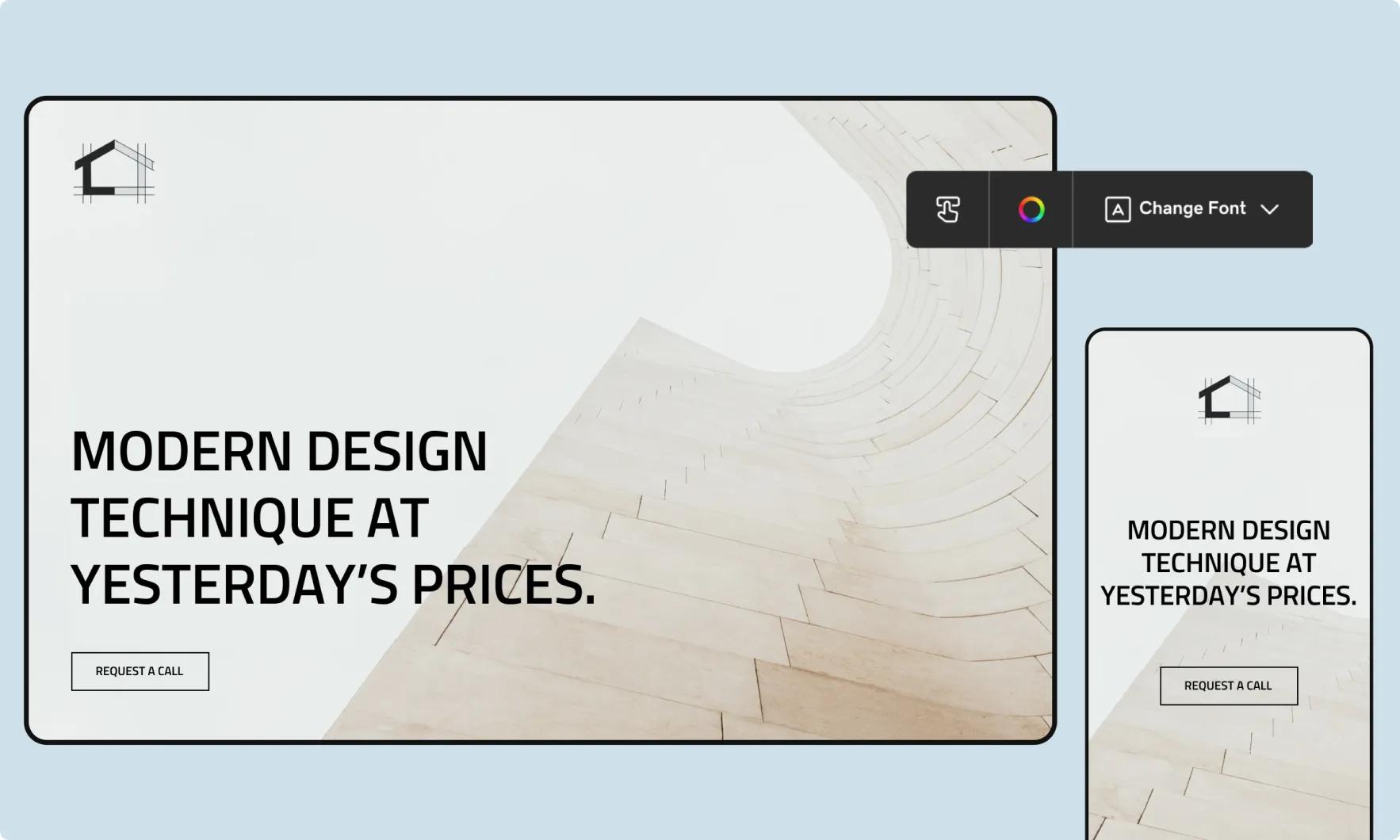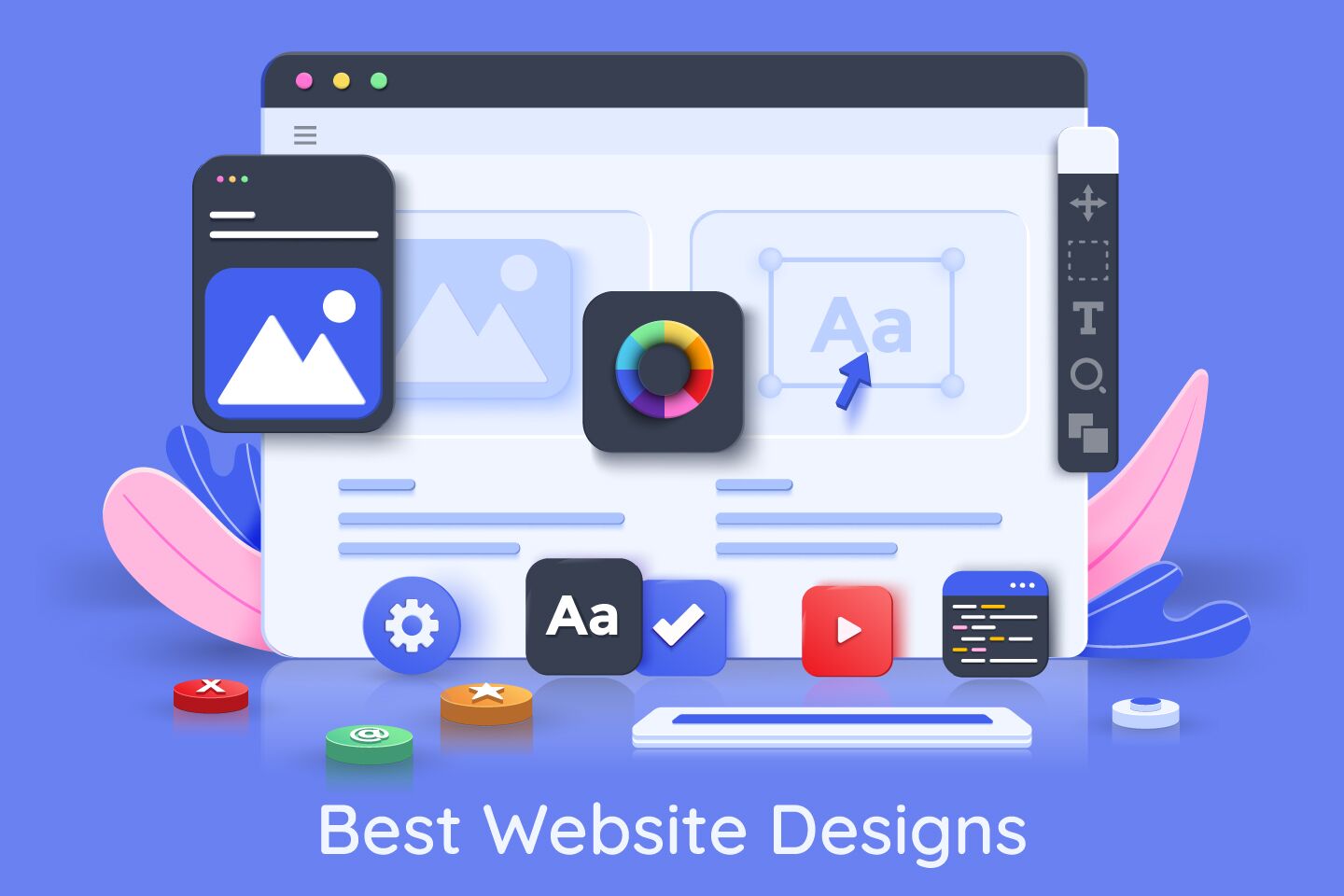The Impact of Customer Experience on Your Website Design Method
The Impact of Customer Experience on Your Website Design Method
Blog Article

Crafting a User-Friendly Experience: Necessary Aspects of Reliable Website Style
In the world of website design, the value of crafting an easy to use experience can not be overstated. Essential aspects such as a clear navigation structure, responsive layout principles, and quick loading times work as the foundation for engaging users successfully. An intuitive individual interface combined with available material standards makes certain that all individuals, regardless of capability, can navigate with simplicity. Despite these essential concepts, numerous websites still falter in supplying this smooth experience. Comprehending the underlying factors that add to reliable layout can clarify how to improve customer satisfaction and involvement.
Clear Navigation Structure
A clear navigating framework is essential to efficient internet site style, as it straight affects individual experience and engagement. Customers need to have the ability to situate details easily, as intuitive navigation lowers disappointment and motivates expedition. A well-organized format allows visitors to recognize the relationship between various web pages and web content, resulting in longer website gos to and raised communication.
To achieve clearness, designers should employ acquainted patterns, such as leading or side navigation bars, dropdown food selections, and breadcrumb tracks. These components not just boost use however additionally offer a feeling of positioning within the site. Maintaining a consistent navigating structure throughout all pages is vital; this knowledge helps customers anticipate where to find wanted details.
Additionally, integrating search performance can even more aid individuals in finding certain material swiftly. In summary, a clear navigating framework is not merely a layout selection; it is a calculated aspect that substantially influences the general success of a website by promoting a satisfying and efficient individual experience.
Responsive Layout Concepts
Effective web site navigation sets the stage for a smooth individual experience, which becomes even much more essential in the context of receptive layout principles. Responsive layout guarantees that sites adapt fluidly to different display dimensions and orientations, improving access throughout devices. This adaptability is accomplished via adaptable grid layouts, scalable images, and media queries that enable CSS to readjust styles based upon the tool's features.
Key concepts of receptive style include fluid formats that utilize percents instead of taken care of units, making certain that aspects resize proportionately. In addition, using breakpoints in CSS allows the layout to change smoothly in between different gadget dimensions, optimizing the design for each and every screen type. Making use of receptive photos is also crucial; images need to instantly get used to fit the display without shedding high quality or causing layout shifts.
In addition, touch-friendly interfaces are critical for mobile users, with sufficiently sized buttons and instinctive motions boosting individual interaction. By incorporating these concepts, developers can create internet sites that not only look aesthetically pleasing however likewise give useful and appealing experiences across all tools. Ultimately, efficient receptive style cultivates customer contentment, reduces bounce prices, and urges longer interaction with the content.
Fast Loading Times
While customers increasingly expect sites to fill swiftly, fast packing times are not simply a matter of comfort; they are essential for keeping visitors and boosting total customer experience. Study suggests that customers usually desert web sites that take longer than 3 seconds to tons. This abandonment can bring about boosted bounce rates and decreased conversions, inevitably harming a brand's credibility and income.
Rapid loading times improve customer engagement and complete satisfaction, as visitors are more likely to check out a site that responds quickly to their communications. Additionally, search engines like Google prioritize rate in their ranking algorithms, meaning that a slow-moving site may have a hard time to accomplish exposure in search results page.

Instinctive Interface
Quick filling look at these guys times lay the foundation for an interesting online experience, yet they are just component of the equation. An instinctive interface (UI) is important to ensure visitors can navigate a web site effortlessly. A properly designed UI enables individuals to attain their purposes with minimal cognitive lots, promoting a smooth interaction with the website.
Secret components of an user-friendly UI consist of consistent format, clear navigation, and well-known icons. Uniformity in style aspects-- such as shade plans, typography, and switch designs-- helps customers recognize exactly how to interact with the web site. Clear navigation frameworks, including sensible food selections and breadcrumb trails, make it possible for individuals to locate info rapidly, reducing stress and improving retention.
In addition, responses devices, such as hover effects and packing signs, inform individuals about their activities and the website's feedback. This transparency grows trust fund and encourages ongoing involvement. Focusing on mobile responsiveness makes certain that customers appreciate a cohesive experience across tools, providing to the diverse ways target markets access content.
Obtainable Content Guidelines

First, use simple and clear language, avoiding jargon that may puzzle readers. Emphasize proper heading frameworks, which not only help in navigation however additionally aid screen readers in interpreting content pecking orders efficiently. Additionally, supply different message for images to convey their significance to customers who depend on assistive technologies.
Comparison is one more crucial element; make sure that message stands out versus the history to boost readability. Furthermore, ensure that video and audio material consists of subtitles and transcripts, making multimedia available to those with hearing problems.
Lastly, include keyboard navigability right into your style, allowing customers who can not make use of find out a computer mouse to access all site functions (website design). By adhering to these accessible material standards, internet designers can develop inclusive experiences that satisfy the needs of all customers, ultimately enhancing customer engagement and contentment
Verdict
In conclusion, the integration of vital components such as a clear navigating framework, receptive design concepts, fast loading times, an instinctive interface, and easily accessible web content guidelines is crucial for creating an user-friendly site experience. These components collectively enhance usability and involvement, guaranteeing that individuals can easily navigate and connect with the site. Prioritizing these layout elements not only improves overall contentment however additionally promotes inclusivity, suiting varied customer demands and preferences in the digital landscape.
A clear navigation structure is essential to effective web site style, as it straight influences user experience and involvement. In recap, a clear navigation framework is not merely a design choice; it is a strategic element that substantially impacts the overall success of a web site by cultivating a effective and satisfying user experience.
Furthermore, touch-friendly user interfaces are crucial for mobile individuals, with sufficiently sized buttons and intuitive motions enhancing individual communication.While individuals progressively expect websites to load quickly, fast packing times are not simply a matter of ease; they are crucial for retaining site visitors and enhancing total user experience. website design.In conclusion, the assimilation of important components such as a clear navigation structure, receptive style principles, fast packing times, an user-friendly customer interface, and obtainable content standards is crucial for developing an user-friendly site experience
Report this page